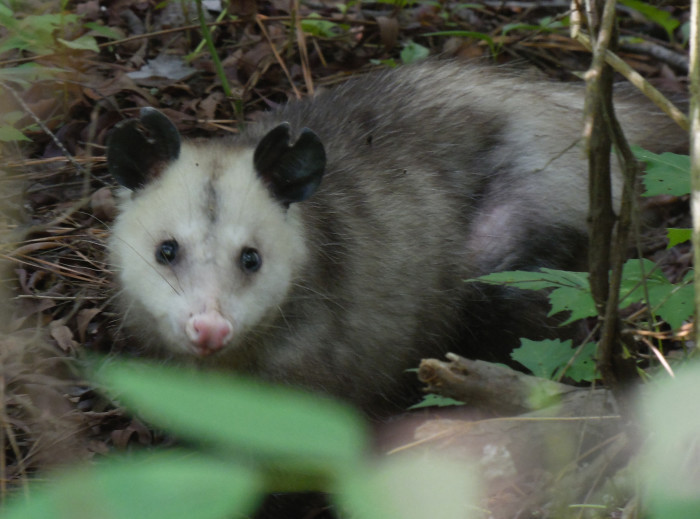
Over 400 years ago, Captain John Smith ventured from England to America for the very first time, sailing to Virginia and exploring the body of water that we would eventually call the Chesapeake Bay. During his initial explorations in this new land, Captain Smith noticed and catalogued many of the interesting wildlife species the explorers came across, some of which were completely novel to the England natives. One of his more notable descriptions was of an unfamiliar and unusual animal, with Smith stating that it “hath an head like a swine, and a taile like a rat, and is of the bignes of a cat. Under her belly she hath a bagge, wherein she lodgeth, carrieth, and sucketh her young.” This creature was of course the Virginia opossum (Didelphis virginiana), a unique mammal in our country, with a primitive history dating back to before the dinosaurs and undergoing very little change since.
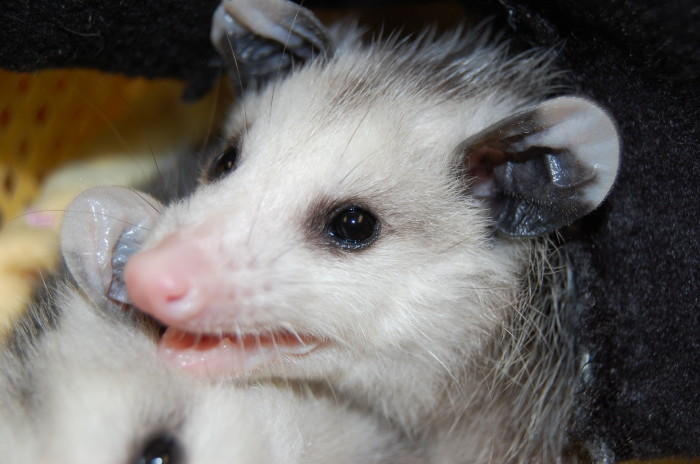
Although many describe the opossum as rat-like, they are not rodents. Virginia opossums belong to the group of mammals called marsupials. Marsupials are different from other mammals in that use a pouch to house and develop their young, setting them apart from the monotremes (egg-laying mammals) and eutherians (those that use a placenta, the vast majority of all mammals). Marsupials are born very early in development, being many times smaller than an adult and looking very much like an embryo. Once born, the young must crawl to the pouch, a flap of skin on the mother’s underside, where it will drink milk and grow into a fully-developed juvenile. The number of young that reside in the pouch varies per species. Examples of marsupials can be found throughout the world, most notably Australia (kangaroos, koalas, etc.) and South America (other types of possums). The Virginia opossum is the only marsupial found in North America, with its ancient ancestors migrating north from South America when our two continents joined at Panama.
Our opossum can be found throughout the United States. They generally grow to be cat-sized, and can be bigger or smaller depending on the region. Larger individuals are found up north, while the southern US tends to have smaller individuals. Some of their most notable features include their small thumbs that allow them to grab and cling to objects, as well as their long, naked, prehensile tail, which they can use to climb and even carry nesting materials. Contrary to popular belief, opossums do not hang from their tails, as they cannot support their weight. The skull of the opossum is also unique, in that it has a small brain-to-body size ratio; its brain is roughly one-fifth the size of the similarly-sized raccoon, and is one of the smallest of all marsupials. The skull is packed with about 50 teeth, more than any other North American mammal.
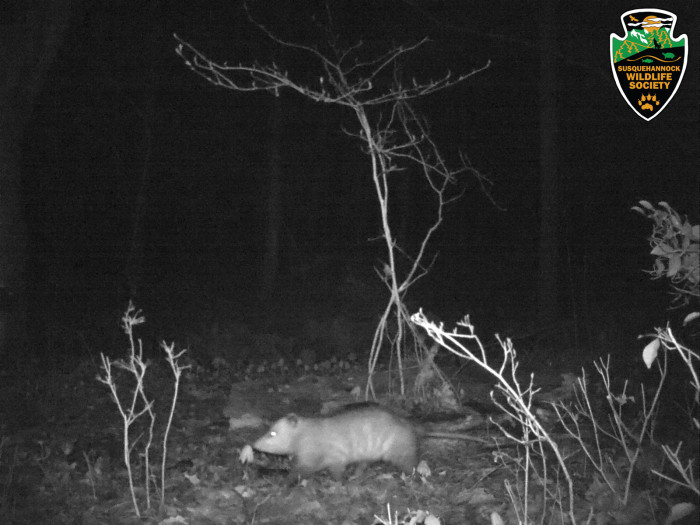
Noted for being extreme generalists, opossums are solitary nocturnal omnivores that live in a variety of habitats, from the deepest forests to the most developed cities and towns. They are very adept at finding their favorite animals, plants, or garbage in almost any landscape, and can even remember where these food sources are so that they can return later. They will go through great lengths to get food and will eat almost anything. They are also known to have a resistance to snake venom. Despite being an extremely adaptable survivor, the lifespan of the opossum is surprisingly short, maxing out at 2-3 years in the wild. This is because the opossum has many predators and few effective defenses, and because they are so adaptable and successful, they aren’t under any pressure to develop a longer lifespan. The first defense against predators is normally to hiss and bare its teeth, but if under extreme stress, an opossum will “play dead” in the hopes that the predator only desires a fresh kill. Triggered by hormones in the brain, “playing opossum” is completely involuntary; the opossum will roll over, open its mouth, stick out its tongue, and emit a horrid odor – a convincing act indeed that could last up to a few hours if necessary. Once the threat is gone, the opossum will eventually right itself and resume its normal activities.
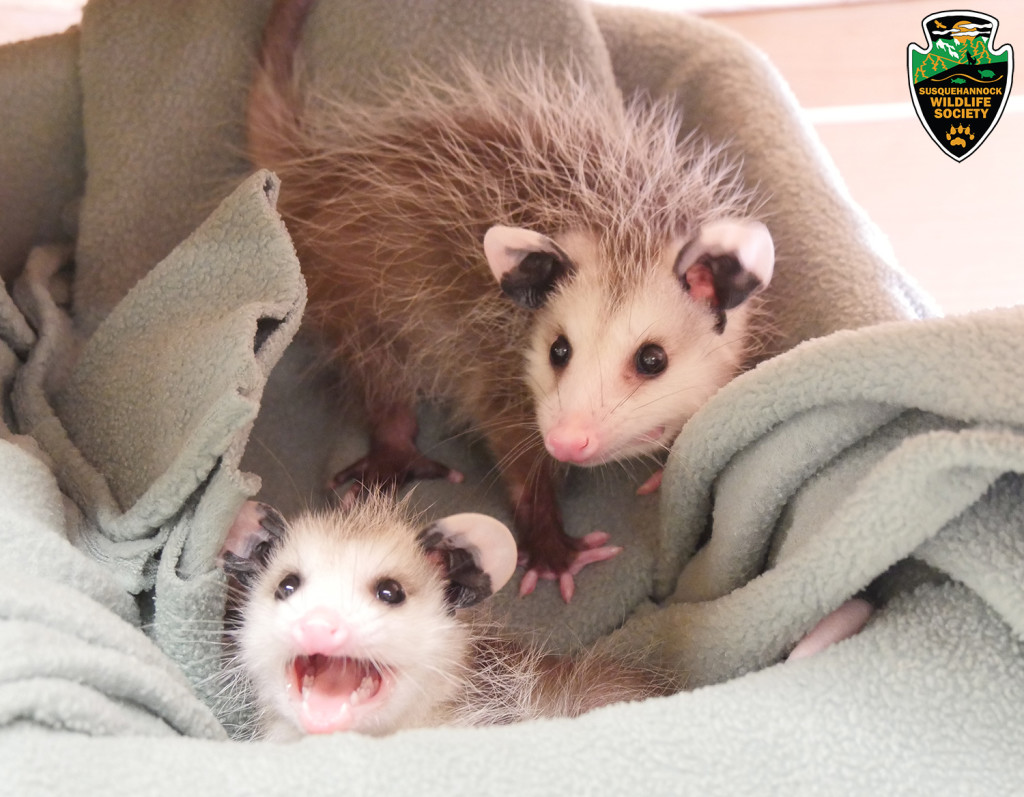 Mating can occur year round for opossums and the female could potential have one to three litters per year. The male (called a jack) will wander around hoping to attract a female (called a jill) by making a clicking noise with its mouth. After a gestation period of roughly two weeks, the young (sometimes up to 10 individuals) are born and must climb to the pouch, where they will continue to develop for another two months. Once they outgrow the pouch, they will ride on the mother’s back for a few more months.
Mating can occur year round for opossums and the female could potential have one to three litters per year. The male (called a jack) will wander around hoping to attract a female (called a jill) by making a clicking noise with its mouth. After a gestation period of roughly two weeks, the young (sometimes up to 10 individuals) are born and must climb to the pouch, where they will continue to develop for another two months. Once they outgrow the pouch, they will ride on the mother’s back for a few more months.
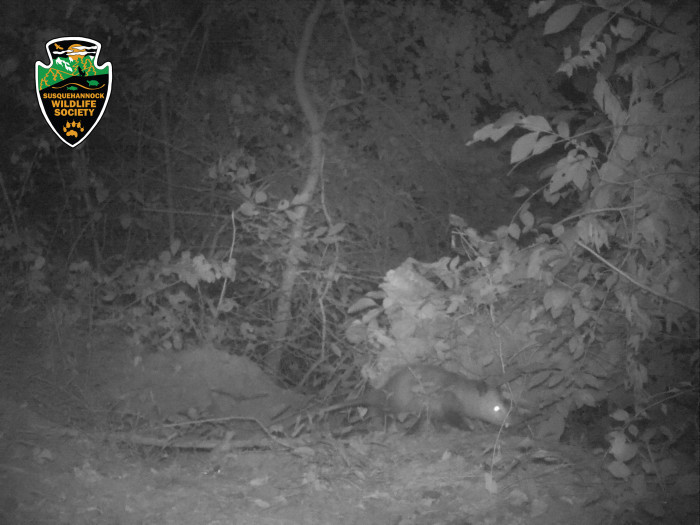 Opossums tend to have a tenuous relationship with humanity; they tend to live close to people and cross paths with us quite often, many times with an individual found in a house or garbage can. On an extreme level they are sometimes seen as dirty, disease-ridden rodents. In actuality, they are very clean, non-destructive and disease is not too much of an issue for them. Opossums very seldom carry rabies as the disease cannot survive in the animal’s low internal body temperature. Opossums also play a significant role in the environment, cleaning up dead and decaying animals as well as controlling pest animals and plants. They are also keen on eating ticks, so they are helpful in controlling the spread of Lyme disease. As always, wildlife is best left alone, so if you are lucky enough to encounter an opossum in the wild, be sure to observe and admire the animal from a distance. They are indeed one of our most unique native creatures.
Opossums tend to have a tenuous relationship with humanity; they tend to live close to people and cross paths with us quite often, many times with an individual found in a house or garbage can. On an extreme level they are sometimes seen as dirty, disease-ridden rodents. In actuality, they are very clean, non-destructive and disease is not too much of an issue for them. Opossums very seldom carry rabies as the disease cannot survive in the animal’s low internal body temperature. Opossums also play a significant role in the environment, cleaning up dead and decaying animals as well as controlling pest animals and plants. They are also keen on eating ticks, so they are helpful in controlling the spread of Lyme disease. As always, wildlife is best left alone, so if you are lucky enough to encounter an opossum in the wild, be sure to observe and admire the animal from a distance. They are indeed one of our most unique native creatures.

